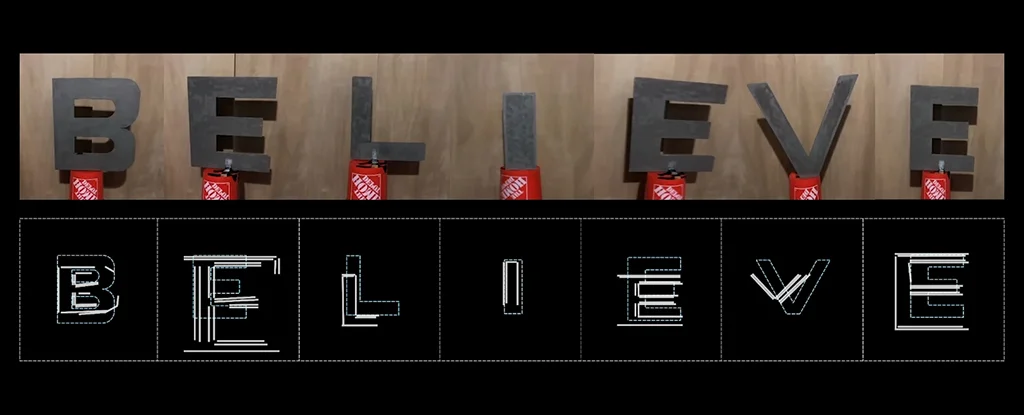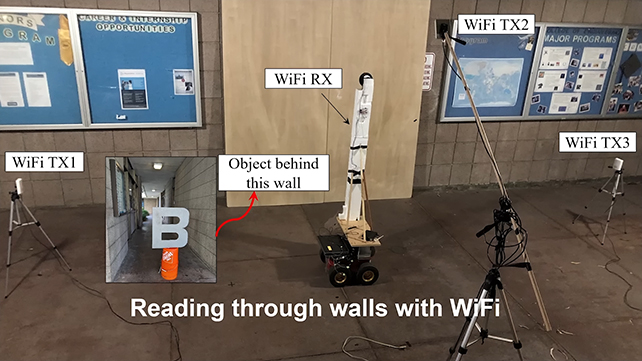Scientists managed to “read” words behind the wall using Wi-Fi
- September 25, 2023
- 0
It turns out that Wi-Fi signals can do much more than stream movies and music around the house: As recent experiments show, they can also be used to
It turns out that Wi-Fi signals can do much more than stream movies and music around the house: As recent experiments show, they can also be used to

It turns out that Wi-Fi signals can do much more than stream movies and music around the house: As recent experiments show, they can also be used to identify shapes behind solid walls. Wi-Fi’s ability to detect motion through walls has been demonstrated before, but the technology has a hard time seeing anything that isn’t moving.
To overcome this limitation, researchers at the University of California, Santa Barbara (UCSB) designed a Wi-Fi setup that would precisely focus on the edges of objects, similar to a person drawing a sketch. This approach meant that researchers were able to use what is called geometric theory of diffraction (or GTD), which describes the behavior of waves when they collide with the edges of objects, causing interference, or diffraction, in waves.

In this case, the waves are Wi-Fi signals that form shapes called Keller cones when they refract around the edges of objects. By interpreting the composition and orientation of these Keller cones, the scene can be gradually unraveled.
“We then develop a mathematical framework that uses these cone traces as signatures to determine the orientation of the edges, thus creating an edge map of the scene,” says Yasamine Mostofi, an electrical and computer engineer at UCSB. The setup created by Mostofi and his colleagues, called Wiffract, includes three Wi-Fi transmitters to send signals and a mobile receiver that captures the signals as they bounce.
We know that Wi-Fi waves can pass through walls — if they don’t, your router becomes unusable — but these waves also create an impact when they hit objects. Some complex mathematical calculations (and educated guesses) are then required to determine the shapes corresponding to Keller cones. By using data from edges with accurate readings, the scientists were able to improve the system’s ability to detect edges with weaker readings, perhaps located far from the transmitters or in a hidden location.
“Once we find high-probability edge points using the proposed visualization kernel, we propagate their information to the remaining points using Bayesian information propagation,” says Anurag Pallaprolu, an electrical engineer at the University of California, Santa Barbara.
The statistical processing of numbers involved in Bayesian information propagation is like working on a puzzle: If you are sure of the positions of some pieces, you can determine the positions and shapes of the pieces needed to fill in the gaps. .
There are still a lot of changes to be made, but the system can already recognize uppercase letters. After all, it can be used everywhere from emergency and rescue services to smart home monitoring to indoor “vision” when there is no direct line of sight. Source
Source: Port Altele
As an experienced journalist and author, Mary has been reporting on the latest news and trends for over 5 years. With a passion for uncovering the stories behind the headlines, Mary has earned a reputation as a trusted voice in the world of journalism. Her writing style is insightful, engaging and thought-provoking, as she takes a deep dive into the most pressing issues of our time.